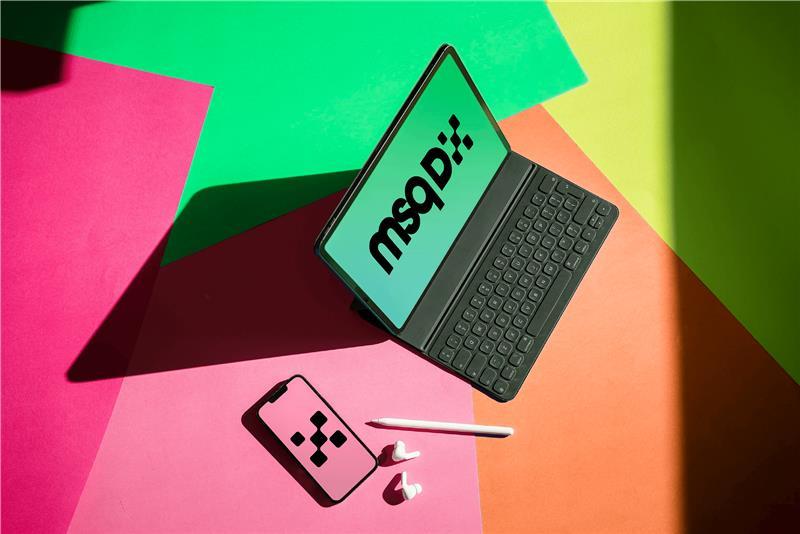 Home Page
Home PageWhat Will Be Hottest Tickets at Next Year’s Ad Festival Line-Up?

Last week’s MAD//Fest was a hive of activity, and it was heartening to see that, alongside the inevitable popularity of Jimmy Carr, Rory Sutherland, Mummy Pig (seriously, biggest line of the week) and free Chick ‘n’ Sours, much of the hustle and bustle revolved around The Creator Stage, where experts from the likes of TikTok, Wingstop, Diageo and Snapchat shared their views.
Quite right, too. The Creator Economy is booming, and at Smarts we’ve not just had front row seats to see its evolution, we’ve had backstage passes. In the relentless quest for more authenticity and relatability (two buzzwords you could not get away from at MAD//Fest!), we’ve seen the market once dominated entirely by celebrities be divided up into different pieces of the pie, as influencers built out their slice, and now creators.
The difference between creators and influencers is more subtle than the divide between influencers and celebs (unless your surname is Jenner and/or Kardashian), but it is an important one to make.
Creators feel more like they’re offering you something rather than showing you something. Whether that’s comedy, life hacks, new skills - it feels like a transaction. You’re taking something away from the time and attention you offer up to them, even if that takeaway is simply… a lol.
And it’s clear that, where brands are concerned, creators are providing a trusted bridge between them and their audiences - particularly as consumer trust in institutions continues to wane.
Brands need that bridge. At the moment, people still want to hear from people more than they want to hear from businesses. Younger people don’t trust brands - brand trust sits at just 28% for 18-24s, compared to 57% for over 65s (Forbes Dec 2024). Meaning it’s more important than ever that brands build what we call Cultural Endurance - working out what they stand for and what they bring to people’s lives, not just grab at fleeting, flashbulb fame that flares today and is gone tomorrow.
So, if we can see and track this pattern of evolution, the really exciting question is…what’s next? As the Creator Economy evolves, where will the hustle and bustle be concentrated at MAD//Fest 2026 (aside from, obviously, Chick ‘n’ Sours)? Might we see some new and unexpected stages arise…
- The Employee Stage - We’re already seeing brands like Currys and Waitrose tap into their own staff to create funny and relatable content that feels like it shows off the brand’s personality through its people. Advantage: Unlike tapping into creators, all of the engagement is happening directly on the brand account, increasing the number of loyal followers. Disadvantage: You need to work reeeally hard to keep pushing the creativity given you’re not leveraging creators’ audiences to boost your following and keep things fresh.
- The Customer Stage - IKEA is (always) way ahead of the curve here. Their Ambassador Club tapped into loyal customers, prioritising those who can generate authentic and credible advocacy. They might not have the biggest following, but they have a super engaged base. Get enough of them on board and that starts to become really powerful. Advantage: You’re showcasing real connections with customers and generating strong social proof that doesn’t feel artificial or ‘bought’. Disadvantage: Using customers and micro influencers means you can’t piggyback off their following and you’re still doing a lot of the heavy lifting yourself - albeit with an added ‘network effect’.
- The Mascot Stage - Perhaps humans will lose trust in humans altogether, and we’ll instead put our faith back in fluffy, feathery, cute or downright weird fictional characters. The success of that green owl has given way to a veritable Noah’s Ark of branded creatures. The previously inanimate Kellogg’s rooster is now strutting around the place. We’ve seen the launch of The Things from our client British Gas (adorable). Weird is in. Fiction is in. Bring on the mascots. Advantage: It’s yours. A great mascot can become one of your brand anchors. A powerful distinctive asset you can use to bring your brand to life. To create a world, create lore and create unlimited stories. Disadvantage: There’s a real risk of hitting peak saturation with mascots, or potentially people just getting sick of them. Let’s face it, no one wants to be stuck in a lift with Aleksandr Orlov.
- The Pendulum-Swing-Back-the-Other-Way Stage - Media moguls once instructed us on what to wear, how to decorate our homes, how to live. Then the algorithm came along and offered us another way. Choice. Personal agency. We’ll decide for ourselves thank you very much. But what we’ve realised is that too much of a good thing can be a very very bad thing, and there’s now a notable trend swinging back towards the editors, the curators. People are ditching their endless scrolling through AI slop for more mindful Substack subscriptions. Brands are now using the Close Friends feature on Instagram or WhatsApp to get more intimate. Editors are the new celebrities. You only need to observe how Jonathan Anderson has been launched for Dior to see this new hype in action. Advantage: If you are one of those trusted voices, you’ve likely unlocked the level above loyalty - you’re at fandom. Congratulations! Disadvantage: You might have their attention, but you’re still trapped in the endless hamster wheel to keep hold of it. Good luck!
This article first appeared on Little Black Book here.
Further reading



